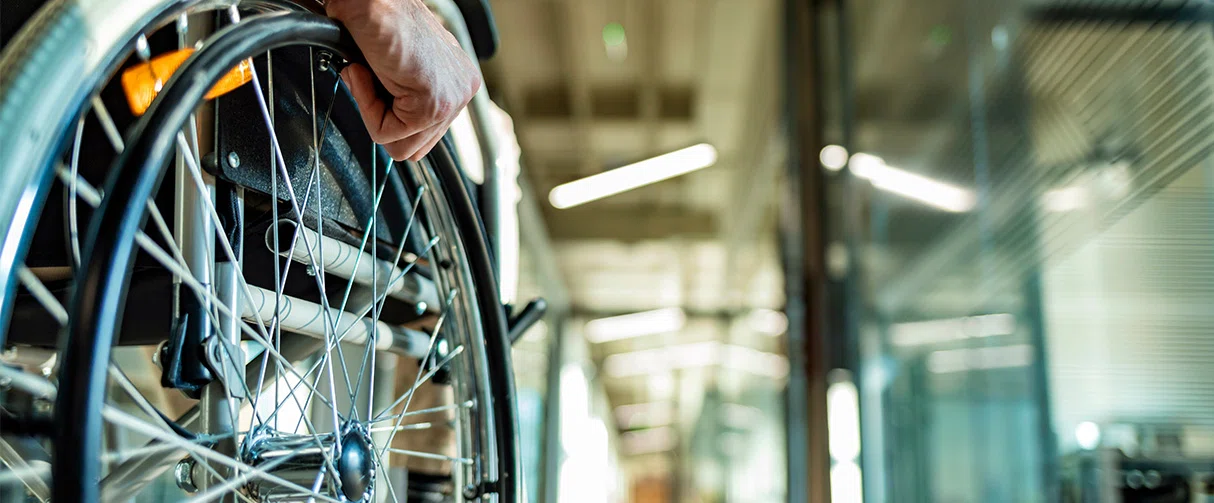


Precision Medicine
Designer Nanoparticles Deliver Drug to Dial Down Inflammation
New nanoparticles can be guided to go to site of spinal cord injury and reduce inflammation.

When actor Christopher Reeve, famous for playing Superman, sustained a serious neck injury from falling from a horse, treatment options were few, leaving him and others with traumatic spinal cord injuries with a hugely compromised quality of life. However, current medical advancements across several disciplines, including neurosurgery, nanomedicine and physical therapy, hold promise to improve the standard of care and recovery for people with spinal cord injuries.
Joining the efforts in targeted therapies for spinal cord injury, Houston Methodist researchers have engineered a superparamagnetic nanoparticle that can be directed to go to the site of spinal damage and release a drug to dial down inflammation and promote repair.
“They're beneficial aspects of inflammation, and there are inhibitory effects,” said Philip Horner, PhD, professor of neuroregeneration and principal investigator on the study. “Our aim in this study was to prevent the negative effects of inflammation by combining biochemical pathway and cellular targeting, in other words, target a specific proinflammatory signaling pathway within a specific immune cell type.”
Philip Horner, PhD,
Professor of Neuroregeneration at Houston Methodist
The researchers have published their work in the journal Advanced Therapeutics.
An electron micrograph of the nanoparticle designed by the researchers. Scale bar: 100nm.
According to the World Health Organization, each year 250,000 to 500,000 individuals suffer a spinal cord injury globally. Like with any other injury, an insult to the spinal cord sets off a series of repair mechanisms: Innate immune cells, such as microglia and macrophages, invade the wounded area and work on restoring tissue homeostasis. However, for spinal cord injuries, this acute inflammation often gives way to a more long-term condition.
“Neuroinflammation plays a crucial step in the recovery process after an injury,” said Horner. “But just after the spinal injury, during the acute injury setting, immune amplification can become a problem, which could then lead to chronic inflammation.”
When chronic inflammation sets in, the immune system’s repair responses get eclipsed by proinflammatory mechanisms that are continuously ramped by the release of cytokines, chemokines and reactive oxygen species by different cells at the injury site. Further, chronic inflammation can last for months, even years.
To prevent an immune run-off to chronic inflammation, the researchers tested if nanoparticles, or molecules with diameters less than 100 nanometers, could be used to target a proinflammatory phenotype of macrophages during the acute injury setting. In particular, they turned their attention to the p38 MAP kinase stress-mediated pathway in these cells wherein the activation of MAPK-activated protein kinase 2 (MK2) causes proinflammatory cytokines release.
Nanoparticles (red) are internalized in activated macrophages (green) at injury site. Blue marks other cells at the injury site.
“We wanted to selectively target this kinase to turn down the production of proinflammatory cytokines without interfering with the macrophages producing anti-inflammatory cytokines that help with regeneration,” said Cinzia Stigliano, PhD, research associate in the Center for Neuroregeneration and the lead author on the study.
For their experiments, Horner and his team surgically induced a hemi contusion injury in the spinal cord in rodents. Then, into the lateral ventricle, Stigliano injected fluorescently tagged nanoparticles carrying an MK2 inhibitor, PF3644022. Since the designer nanoparticles are superparamagnetic, she could guide them to the injury site magnetically.
When she analyzed images of the injury site, she found that the nanoparticles were successfully taken up by the macrophages at the injury site and consequently, the levels of proinflammatory cytokines were lowered. She also observed reduced trafficking and accumulation of phagocytic cells, a macrophage phenotype involved in the amplification of inflammatory responses.
With the proof of concept that the nanoparticles can be used to reduce ongoing inflammation, the researchers plan to investigate if this change influences recovery from injury.
“We now have nanoparticles that can be easily produced and injected to target immune cells in an acute injury setting,” said Stigliano. “This study is just the beginning. Next, we would like to combine this technique with other strategies to eventually improve regeneration.”
This research is supported by the Morton Cure Paralysis Fund, the TIRR Foundation through Mission Connect Jerry Johnston Andrew the Craig H. Nielsen Foundation.
Stigliano, C., Frazier, A., & Horner, P. J. (2022). Modulation of Neuroinflammation via Selective Nanoparticle‐Mediated Drug Delivery to Activated Microglia/Macrophages in Spinal Cord Injury. Advanced Therapeutics, 5(11), 2200083.
Vandana Suresh, PhD
December 2022
Related Articles





